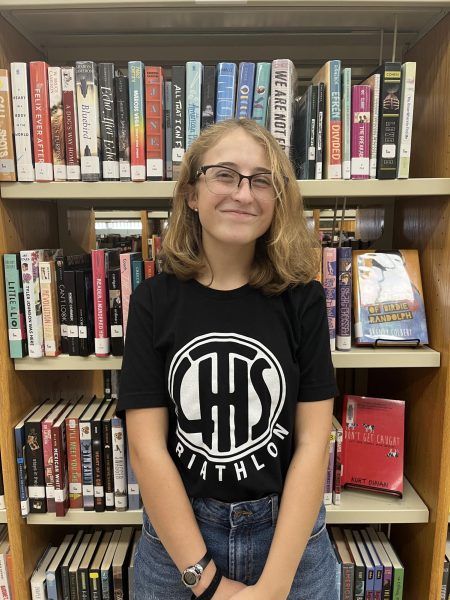The Feminist Musical About Six Medieval Queens
May 3, 2022
Despite the incredible leaps the world has made in gender equality, girls still have to grow up learning about the injustices they will most certainly face in the future. This has been the case for millenia, and even with equal voting rights, women still face subtle and often blatant sexism.
The time we live in is more progressive, and women can usually expect respect and fairness. Thanks to the #MeToo movement and efforts of women across the world and throughout time, women are finally recognized as more than just a wife. It’s incredible progress, and it’s astounding how much women could do for gender equality in just a century.
And yet, what about the women who didn’t live in the progressive twenty-first century? Let’s rewind. The year is 1509, and Henry VIII has just become king of England and married his first wife, Catherine of Aragon. Besides the fact that Catherine was previously married to Henry’s brother, and had spent the seven years afterward imprisoned, there’s nothing to prevent the marriage. Catherine isn’t young anymore, and it’s increasingly difficult for her to have a child. Henry found another woman who persuaded him to do something incredibly unusual: annul his marriage. For the last few months of his marriage to Catherine, Henry was married to a second woman by the name of Anne Boleyn.
Henry’s habit of unfaithfulness didn’t end there. His marriage to Anne didn’t last either, ending with his new wife’s execution. After Anne was beheaded for her own infidelity, Henry married Jane Seymour. Somehow, these three wives were only half of the women he made his queens. Seymour died from birth complications, leading Henry to look elsewhere again. His fourth marriage was to Anne of Cleves, but he allegedly found her so hideous that he divorced her within six months. Next, he wedded Katherine Howard, but much like Boleyn, she was executed for her unfaithfulness. Henry’s final wife was Catherine Parr, who outlived him and rounded out the six wives.
The royal drama seems like it sprung straight from a novel, and in fact, it has inspired several reimaginings of Henry and his wives’ lives. Perhaps the most powerful is a musical called Six, which (you guessed it) is named after the six wives of Henry VIII. The musical was written by Toby Marlow and Lucy Moss and produced for West End, later to spread to other countries and theaters. The musical is unique in its modernity, where each of the queens sing a pop song about what happened to them. It weaves history, feminism, and entertainment together in a captivating production that has found a home in the hearts of many.
In Six, each queen begins the musical set out to prove that she suffered the most. Their songs and dialogue are self-centered and rude at some points, driven by their anger and hatred toward Henry. What they had in common only served to push them apart until nearly the end of the musical. None of them could see past how much he wronged them, and it soured them with competition.
Unfortunately, records of the last four queens weren’t as abundant as the first two, and we’ve lost a lot of their information over time. We may not know how Catherine Parr acted in real life, but in Six, she takes her place as the final queen with resignation. She sings about her life before Henry, and how that was robbed of her, but she only does so because the other queens pressure her to do it. In the final verse, she turns the musical’s theme on its head, changing her song to be about her accomplishments. Unlike the rest of the songs, she includes the other queens, bringing them together. Contextually, it makes sense that Parr would be the one to rebel against their self-entrapment – she was the only one who escaped her marriage without divorce or death.
The final song has the same name as the musical. The queens make the choice to forget about Henry and instead redesign their lives according to how they wished it had played out. Together, they take a stand against their classification by their husband, noting how the only reason the world knows their names is because of Henry. The six queens find their identity and discover who they are without their husband in the final empowering number of the musical.
There are a million different ways to be a woman, and this musical showcases only a few of them. A girl can stick out in a crowd like Catherine Parr, or she can fit in like Catherine of Aragon. She can be family-oriented, like Jane Seymour, or she can go it alone like Anne of Cleves. Maybe she’s ambitious, like Anne Boleyn, or enduring, like Katherine Howard. There is no wrong way to be a woman, and more importantly, there’s nothing wrong with choosing to be yourself.
It’s been five hundred years since Henry VIII wedded six women and made them famous. Times were different back then, and the world expects different things. It’s easy to get caught up in those expectations, but hopefully it’s soon easier for women to defy them and choose their own story.





